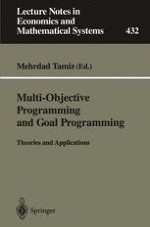1996 | Buch
Multi-Objective Programming and Goal Programming
Theories and Applications
herausgegeben von: Dr. Mehrdad Tamiz
Verlag: Springer Berlin Heidelberg
Buchreihe : Lecture Notes in Economics and Mathematical Systems
Enthalten in: Professional Book Archive
